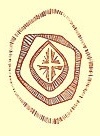A Catholic website for the modern reader

Interpreting Vatican II
by
Fr. Ricahrd P. McBrien
There has been a running controversy for at least two decades over how the Second Vatican Council should be interpreted: either as an expression of continuity with the historic Catholic tradition, or as a disruption of continuity. In the former interpretation, the council introduced nothing new; for the latter, it represented a break from the past.
This either/or analysis was initiated by conservative interpreters of Vatican II. For them, the "enemy" is the five-volume History of Vatican II, edited by Giuseppe Alberigo, head of a research institute in Bologna.
These interpreters accuse the so-called "Bologna school" of promoting a highly "ideological" and "unbalanced" hermeneutic of discontinuity --- in other words, an approach that highlights those instances in which the council modified traditional teachings and practices.
If the council introduced no innovations at all, why did the bishops in the minority fight so hard against the document on religious liberty and why did they oppose with such determination the council's teaching on collegiality?
The controversy heated up in 2005 with the publication of a new book, in Italian, by a church historian and Vatican official, Archbishop Agostino Marchetto, Secretary for the Pontifical Council for Migrants and Itinerant Peoples, offering what he calls a "contrapuntal," or alternative, interpretation of Vatican II.
The book was introduced at a public event that summer by Cardinal Camillo Ruini, vicar for Rome and president of the Italian Bishops' Conference. An even higher authority offered implicit support to Archbishop Marchetto's approach.
In his Christmas address to members of the Roman Curia later that same year, Pope Benedict XVI reaffirmed the position that he had taken previously when he was still known as Cardinal Joseph Ratzinger, head of the Congregation for the Doctrine of the Faith. In his earlier life, Cardinal Ratzinger had referred to the hermeneutics of discontinuity as a hermeneutics of "rupture."
The truth, however, lies somewhere in between: neither continuity alone nor discontinuity. A third, both/and approach has been, for the past 40 years, the consensus position embraced by the great majority of Catholic scholars who have devoted themselves to conciliar research. More significantly, it was also the understanding of the great majority of council Fathers.
The turn away from this both/and approach came about after most of the Vatican II bishops died and a new type of bishop, with no personal experience of the council, was appointed in their place during the pontificate of John Paul II.
Unfortunately, the either/or approach which has emerged ignores the fact that centrist interpreters of the council readily agree that the council retracted nothing in the doctrines articulated by previous councils. But the either/or approach also has failed to understand that the bishops of Vatican II, despite their commitment to continuity, offered a fresh look at various pre-conciliar teachings.
As centrist, both/and interpreters have pointed out, the positions defended by the defeated minority at the council did not represent the will of the council, in contrast to the positions that were adopted by an overwhelming majority and approved by Pope Paul VI.
Indeed, if the council introduced no innovations at all, why did the bishops in the minority fight so hard against the document on religious liberty and why did they oppose with such determination the council's teaching on collegiality --- so strongly, in fact, that Paul VI was later moved to attach an appendix to the council's Dogmatic Constitution on the Church to reassure them that collegiality did not fundamentally compromise the authority of the pope?
In doing research recently for another project, I came across a column that I had written at Christmas 1966, one year after the council adjourned. The column was entitled, "Did the Council Change Anything?" and began with the words: "The strongest and, in the long run, the most effective opposition to the Second Vatican Council comes not from the vocal detractors of the Council's spirit and orientation but rather from those who insist that the Council really changed nothing at all."
It continued: "When opponents of Vatican II insist that the Council really changed nothing at all, they are right if they mean that it brought to a fuller flowering the authentic tradition of the Church. But one may seriously question if this is what they mean. For the Council does, in fact, pose a challenge to change. It has changed much that was once considered a part of the authentic tradition of the Church: some of the theology of our catechisms and seminary manuals and pulpit oratory" of the first half of the 20th century.
"What the Council has shown is that this theology, so long assumed to be 'traditional,' was not traditional at all...."
Ongoing differences over the interpretation of Vatican II reflect, in the end, residual and deep-seated differences over pre-Vatican II theology and practices.
The council's defeated minority are not without heirs.
(Father Richard P. McBrien is the Crowley-O'Brien Professor of Theology at the University of Notre Dame. This article is reprinted from the February 2, 2007issue of The Tidings, the Catholic newspaper for the Archdiocese of Los Angeles.)
